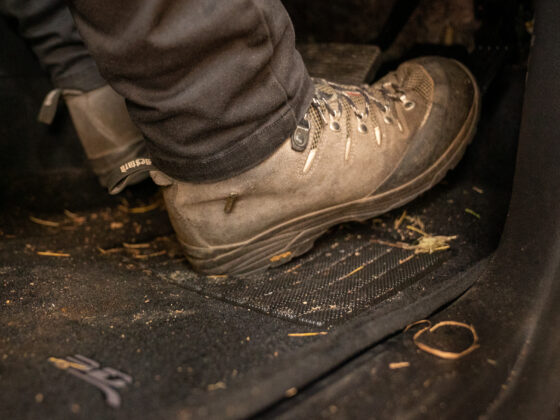“I don’t want more engine power or torque.” Do you know who said that? Absolutely no one, ever. I’ve never met a wheeler, or anyone into motoring for that matter who hasn’t yearned for better figures from their engine.
It makes sense, right? We put in the hard yards bolting on every bell and whistle we need to get us further off-road than we’ve ever been before, the byproduct of which is a whole lot of additional weight, poor performance and a needle on our fuel gauge that seems to reach terminal velocity as it hurtles towards empty in record time. So, what’s the way around it?

For decades cranking up the kilowatts has been a risky manoeuvre; in the days of mechanical injection and old-school turbos, the figures we could get were limited and fraught with issues. It was a fine line between cruising off into the sunset all smiles and twisting the tap too much, resulting in costly engine failure.
Today, the game has changed. With modern technological advancements squeezing more power from a stock motor is as simple as clicking a few buttons. But don’t be fooled – that doesn’t mean you can do it yourself, nor does it mean you should trust a cowboy tuner to dial figures up for you.

Enter Steinbauer
Cue Steinbauer Engineering, a company created with off-roaders like you and I in mind. Now, unlike many of the products us Aussies run, Steinbauer’s weren’t forged on the tracks of Australia. Instead, they were created utilising tried and tested kilowatt cook-up recipes from Europe. Home of the factories that produced some of the most powerful cars the world has ever seen for Aussie off-roaders. Consider it the best of both worlds because that’s precisely what it is.
Starting from humble beginnings in the 1990s, Steinbauer was created with a clear goal: to improve the performance of diesel engines. They were seeing the issue with products that achieved their results through invasive and risky tuning methods such as chip-tuning, flashing and pressure box technology. Steinbauer set about developing a higher-end product that used state-of-the-art programming which focussed on the injection system while still utilising an easy electronic plug-and-play principle. Fast forward 20 years and Steinbauer continues to set the benchmark for diesel engine tuning.
So, when it came to harnessing even more power from the Next-Gen Ford Ranger, you can guess who we called. Naturally, though, we didn’t exactly expect what happened next.

CEO Herbert Steinbauer travelled out all the way from Austria with his Chief Engineer Hubert in tow to give the Ranger the special treatment themselves.
Herbert explained that generally speaking, wheelers can expect a gain of around 18-20 percent over their factory power and torque figures after having a Steinbauer Performance Module fitted to their vehicle, and the results operate within the factory limits of engine-testing, meaning all that extra power doesn’t equal extra risk to the motor of your expensive 4X4 at risk.

So, what’d that mean on the Next-Gen Ranger?
It meant a colossal 174kW and 887Nm of torque at the wheels. Or, in layman’s terms: a bloody lot. The gains were immediately noticeable. While remaining easy to drive, the difference in how the Ranger reacted to a dose of the right foot on the loud pedal was incredible.
Off-road, this meant added capability where power counts most in places like sand dunes and bog holes, and all that extra torque meant we had a tough time finding something the Ranger wouldn’t crawl up; at the bowser there was no noticeable change in economy which is no easy feat considering how much extra power the Rangers V6 was now putting out. The Power Module came into its own when towing, too, making overtaking and day-to-day life with a van behind the Ranger an absolute breeze.
If you’re keen on finding out just how much power is sitting untapped in your motor and ready to be released, Steinbauer manufactures Power Modules for almost every modern diesel engine on the market and we reckon you’d be crazy not to run one!













